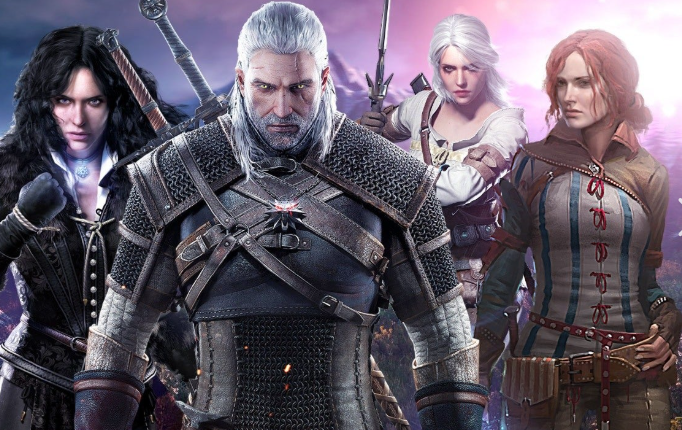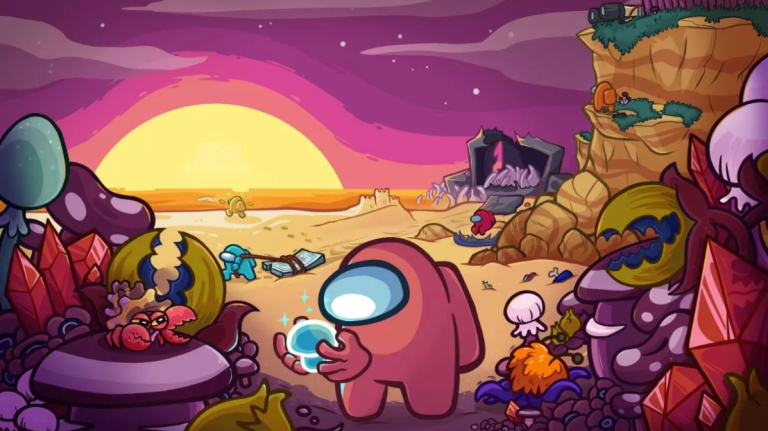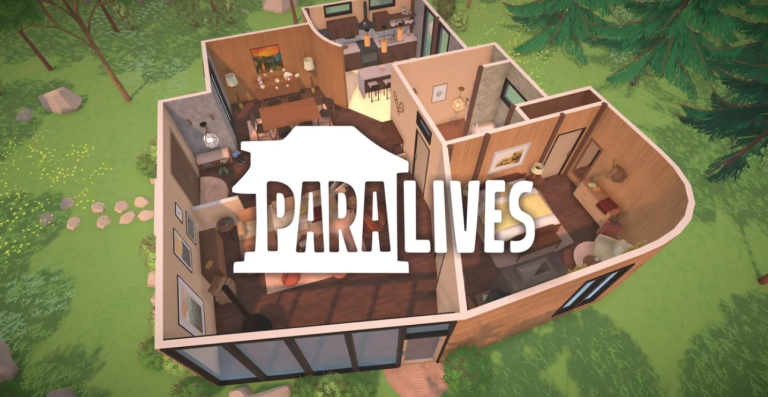
The first moment I fired up Blades of Fire, a strange kind of nostalgia washed over me. It reminded me of those long, blurry nights from over a decade ago—camped out on a friend’s couch, clutching an aging Xbox 360 controller, hacking my way through some shameless God of War clone that somehow managed to steal my heart. It wasn’t polished, it wasn’t perfect, but it had that thing—that raw, unfiltered fun that keeps you button-mashing long after you swore it was time for bed.
Blades of Fire has that thing. And more.
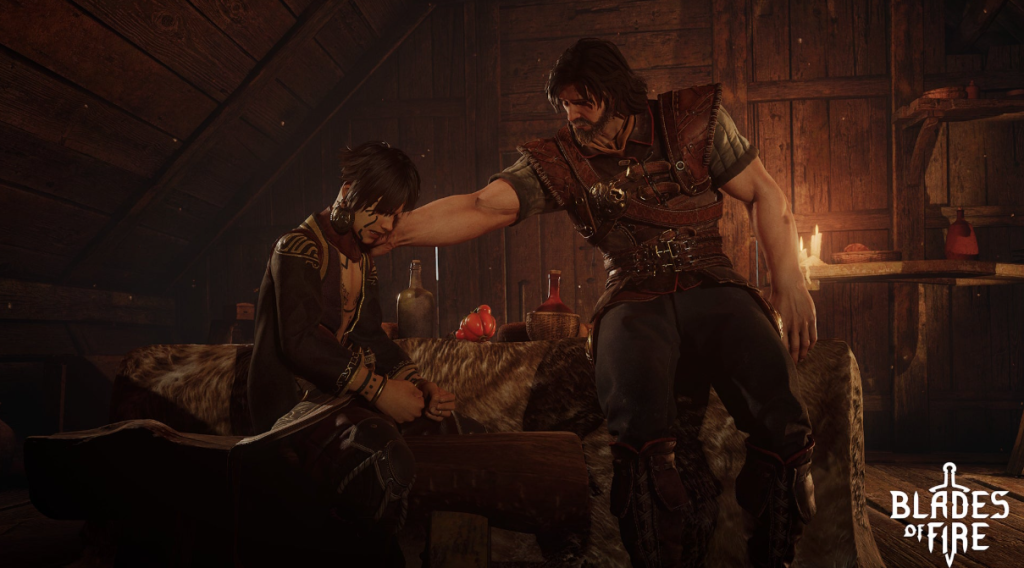
This one comes from MercurySteam—the same Spanish studio that gave us Metroid Dread. They’ve got a knack for digging into familiar genres and pulling out something delightfully unexpected. This time, they didn’t go back to space suits or vampire castles. Instead, they took a sharp left turn and resurrected a 22-year-old cult classic few outside hardcore gaming circles even remember: Blade of Darkness.
You don’t need to have played the original to appreciate what’s going on here. Blades of Fire isn’t just trying to recreate the past—it’s here to reimagine it. It walks like a Soulslike, talks like a Soulslike, but plays with the high-impact swagger of God of War fused with a pinch of Monster Hunter’s wild energy. You begin your journey in a burning village, hammer in hand, enemies closing in from every angle. It all screams “Soulsborne!” at first glance. But within minutes, you realize: this game doesn’t want to punish you—it wants to dance with you.
Combat feels snappy and fluid, not bogged down by overly stiff animations or weighty delays. Aran De Lira, our sword-swinging hero, fights with the grace of a stuntman and the muscle of a gladiator. Dodging enemy blows, slicing through their limbs, and landing the perfect counterattack feels more like choreography than a punishment cycle. It’s not about suffering—it’s about mastering the rhythm.
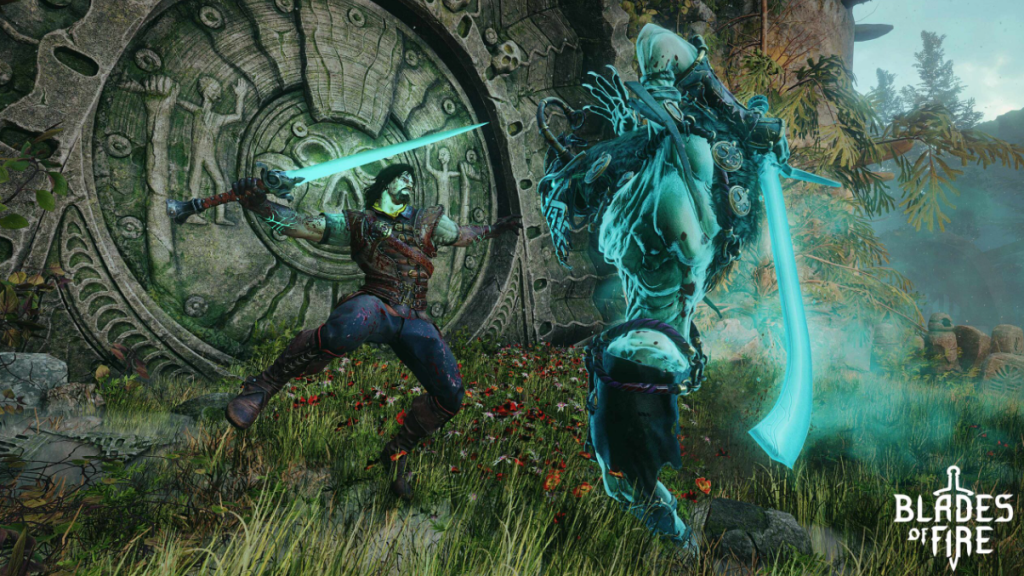
That said, Blades of Fire still has its quirks. Take the forging mechanic, for instance. It’s central to the game’s story: all the metal in the world has been cursed into stone by an evil queen, and only you—with your stolen divine hammer—can create magic-resistant weapons. Sounds epic, right? Well, in practice, it’s… fiddly. Crafting requires you to manually swing your hammer using a waveform visual guide. Mess it up, and your weapon might end up weaker than a butter knife. At first, it felt like trying to tune a guitar without ever learning chords. But once you get the hang of it? There’s something deeply satisfying about knowing your blade was quite literally forged by your own hands.
And the way you earn new weapon blueprints? By slaying enemies who use them. Want a new spear? Go take down a bunch of spear-wielding maniacs. It’s a brutal yet strangely intuitive design—after all, in a world where every bit of metal is sacred, your best bet is to pry it from someone else’s cold, defeated hands.
What makes this game breathe, though, is its personality. It’s not just a dark and brooding “git gud” simulator. You’ll meet pint-sized witches yelling incantations in Scottish accents, fight Ewok-like creatures riding oversized swords, and even explore a moving house. It constantly shifts from grim to absurd, like flipping between Dark Souls and Shrek in a single breath. One minute you’re in a life-or-death boss battle, and the next you’re being mocked by a goblin in a tutu.
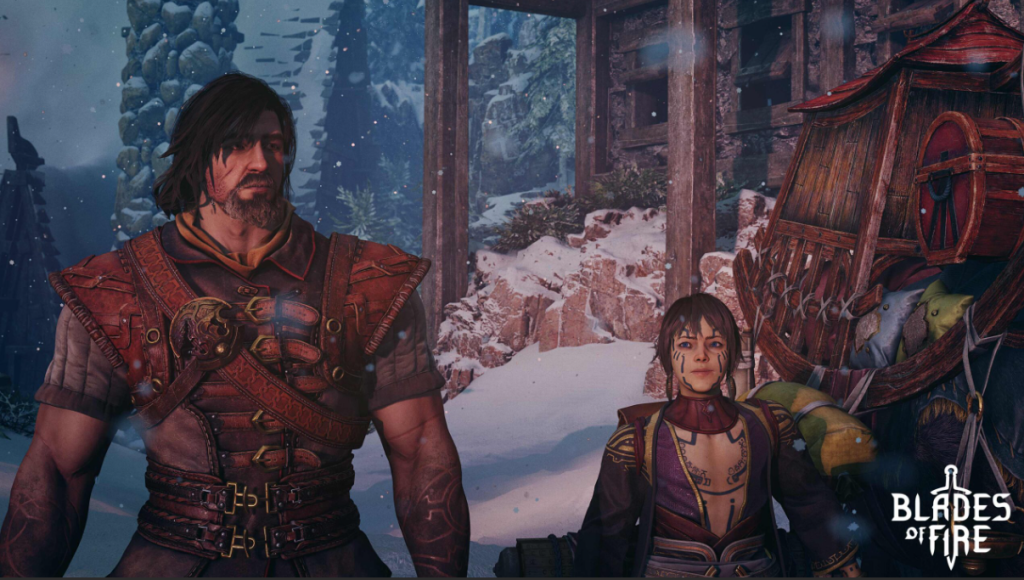
Then there’s Adso—the young magic user who tags along on your journey. He’s not exactly a heavy-hitting companion like Atreus in God of War, but more of a chatterbox encyclopedia. He’ll offer tips mid-fight, give bits of lore, and sometimes just mutter something weird. He feels like that overly helpful friend on the couch, watching you play and offering just enough advice to be endearing instead of annoying. The devs hinted he’s got a deeper story, something they’re keeping under wraps for now. But already, he brings heart to the chaos.
Sure, Blades of Fire isn’t flawless. Its ambition often outpaces its polish. The budget shows in places. But maybe that’s what makes it feel real. Like those scrappy B-movie action games we used to love—rough around the edges, but full of soul. The game’s director, Enric Álvarez, even said he doesn’t care about “AA vs. AAA” distinctions. For him, AAA isn’t a budget—it’s a mindset.
And that mindset shows. In a world of hyper-polished live service games, jammed full of season passes, microtransactions, and neon overlays, Blades of Fire is refreshingly honest. It doesn’t guide you by the hand. It wants you to get lost. It wants you to stumble into a cursed village by accident, listen to a masked blacksmith’s tragic backstory, and somehow get sidetracked for hours. That sense of discovery? That’s the kind of adventure modern games often forget to offer.
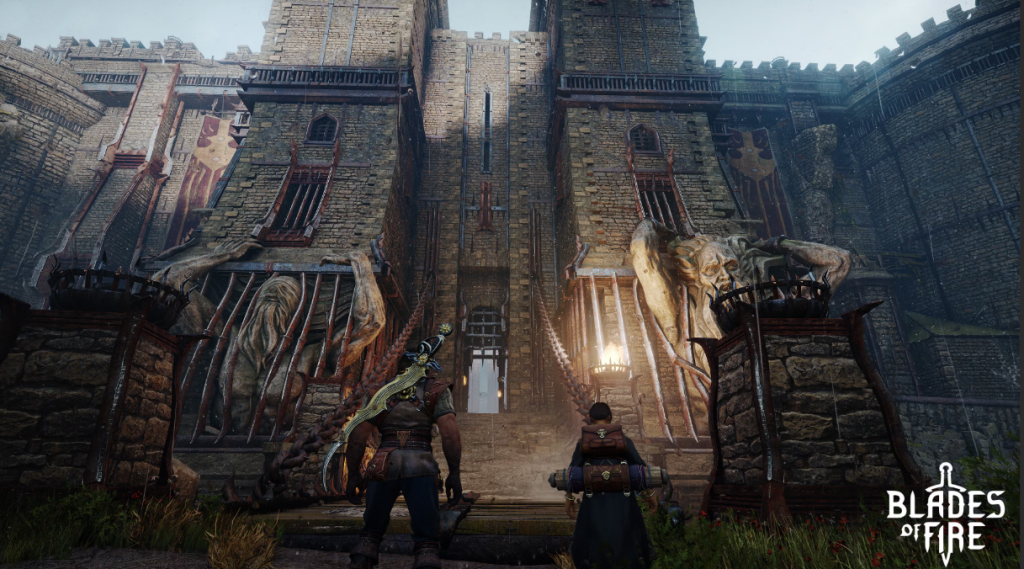
Blades of Fire isn’t just a game—it’s an experience that sticks with you. You might spend two weekends on it, cursing through a tough boss fight, laughing at a bizarre NPC encounter, or hammering away at your next sword. And afterward, something about it lingers. It’s not the most flawless thing you’ve ever played—but it might be one of the most memorable.
The game launches on May 22, 2025. If you’ve got a gap in your calendar and a craving for something with teeth, give it a shot. You might just fall in love with a flaming blade and the weird, wonderful world it slices through.
![]()
